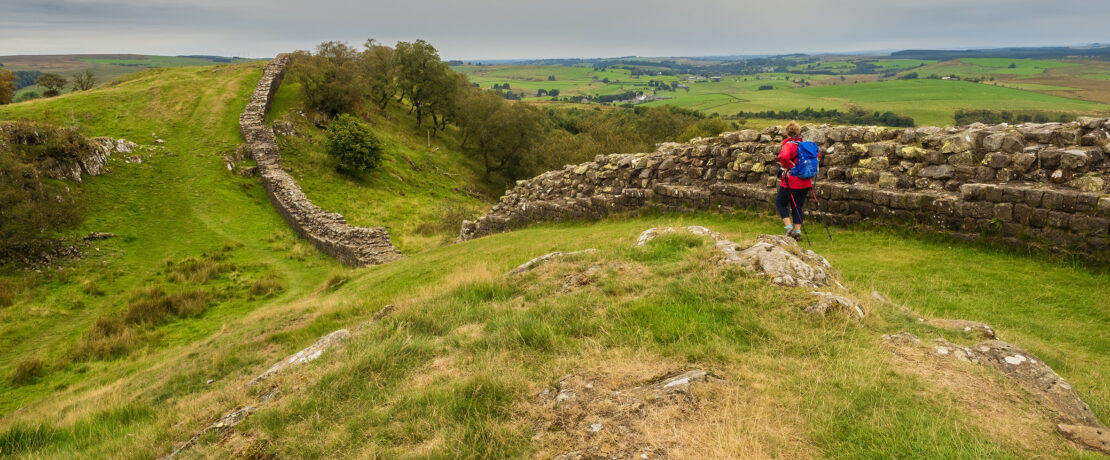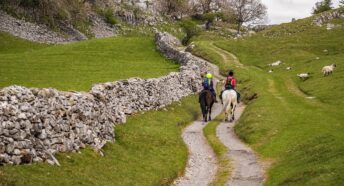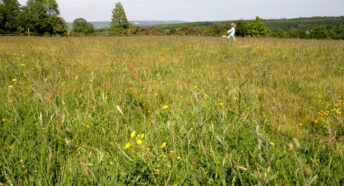Five historic Roman landscapes to explore
Between AD43 and AD410, the Romans reshaped England. Historian Bijan Omrani follows in their footsteps and explores some of the country’s most evocative Roman landscapes.
Reculver Roman Fort, Kent
Reculver is a haunting place; a landscape touched both by Rome’s legions and the sea’s power. It lies three miles along the coast from Herne Bay, originally guarding the approach to the Isle of Thanet. In Roman times, Thanet was cut off from the mainland by the two-mile-wide Wantsum Channel, which silted up in the Middle Ages. Soon after the Romans invaded they constructed a fort here. They enlarged the fort with stone walls and ditches in the third century to protect against Saxon raids. Later, a Saxon church was built in its ruins.
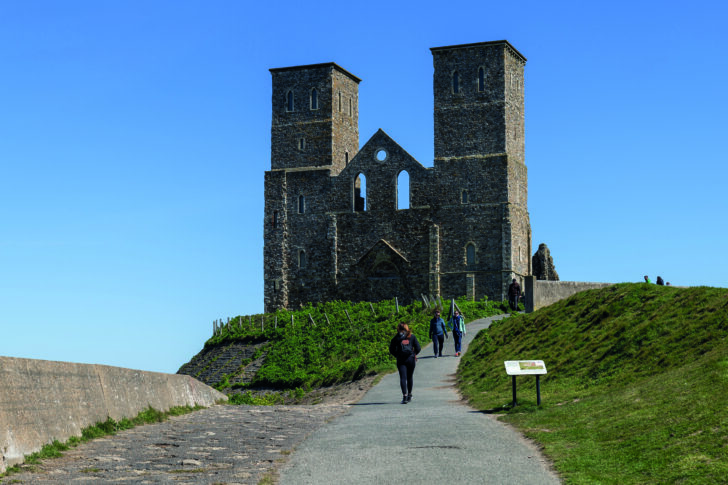
In 1810, coastal erosion forced the demolition of the church’s medieval successor – except for its towers, which are still a landmark to shipping. The parts of the fort walls that have not fallen into the sea are still visible.
Silchester Roman City Walls, Hampshire
Set among the farmland and narrow wooded lanes between Basingstoke and Reading, Silchester was a more significant town in Roman times than either of its modern neighbours. Before the Roman invasion, it was a tribal centre of the Celtic Atrebates tribe, but Rome turned Silchester into a provincial capital with a grid layout of streets, temples, baths and walls.
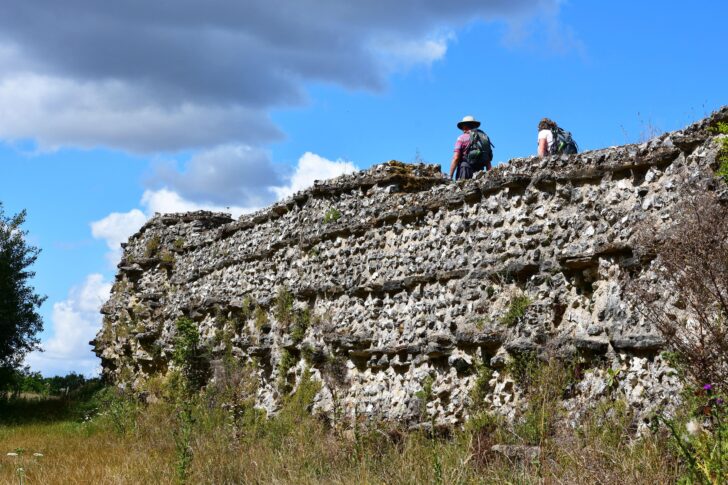
After the Roman collapse, the town was abandoned and the buildings disappeared beneath the fields. But, its imposing walls and ditches remain, as well as the foundations of the amphitheatre just outside. You can spend a day wandering among these evocative remains, or exploring the various Roman roads – including the so-called Devil’s Highway – that radiate from the site.
Housesteads Roman Fort, Northumberland
One of the most dramatic spots on Hadrian’s Wall, Housesteads is a place where you can really imagine being at the edge of empire. It sits at the end of a long ridge, with wonderful views over the rugged and hilly terrain. Here, you can appreciate the Romans’ lasting mark on the landscape: not just the wall itself, but also the ‘Vallum’, the defensive ditch and mound system to the south, which stretches for much of its length. This is an excellent starting point for walks to explore Hadrian’s Wall, while Housesteads itself is one of the wall’s largest and best-preserved sites. It even features a superb block of Roman toilets!
Chedworth Roman Villa, Gloucestershire
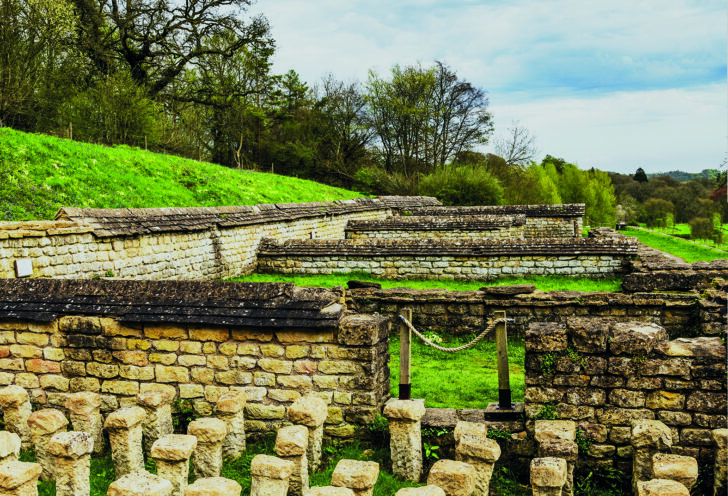
In Roman times, Chedworth was one of the most opulent spots in Britain. It’s a landscape studded with grand villas, reached from a spur of the Fosse Way, the Roman road that ran down the Coln Valley. Rediscovered in the 19th century, the villa boasts intricate mosaics and a hypocaust heating system, as well as a water shrine built around a well. One can reach it on foot by the Monarch’s Way path, imagining the grandeur of the Roman houses here as you walk.
Wroxeter Roman City, Shropshire
Wroxeter was a grand Roman city that was abandoned and never built over. The walls of a number of its buildings still stand, notably the ‘Old Work’ – the 7 metre high wall of a basilica. The Old Work is the tallest piece of free-standing Roman wall in England, and towers over the neighbouring pastureland.
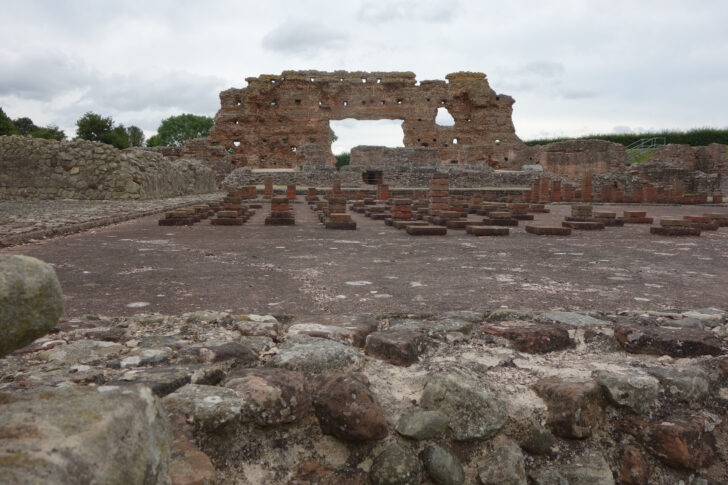
The city ruins, with their visible baths, forum and reconstructed town house, are fascinating in themselves. But, the Roman impact can also be seen in the wider landscape. Wroxeter’s earlier incarnation was a Celtic tribal capital in a fort on top of the 400-metre-high hill of Wrekin. Under Roman rule, however, the fort was abandoned, and the new city took its place in the more convenient flatlands.
About the author
Bijan Omrani is a historian and classicist. His latest book, Caesar’s Footprints: Journeys to Roman Gaul, explores how the Roman conquest changed the culture of Europe. He lives in Devon, not far from the end of the Fosse Way.
A version of this article was originally published in CPRE’s award-winning magazine, Countryside Voices. You’ll receive this, as well as access to other benefits including discounts on attraction visits and countryside kit from major high street stores, when you join as a CPRE member. Join us now.
